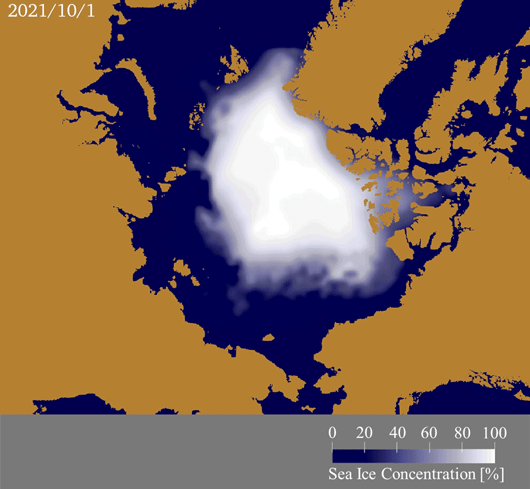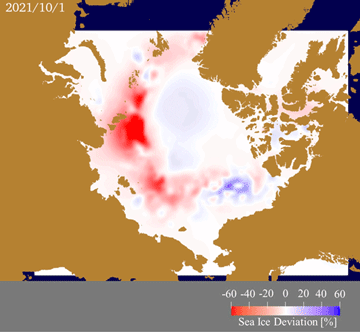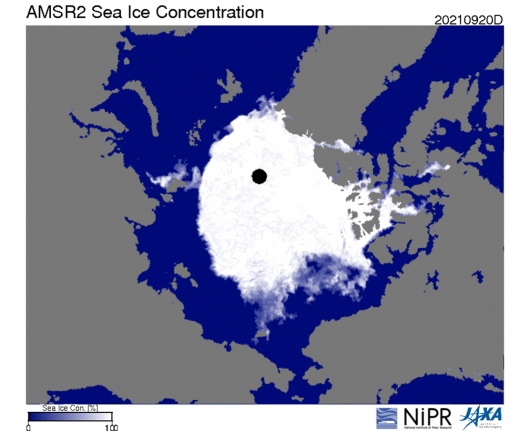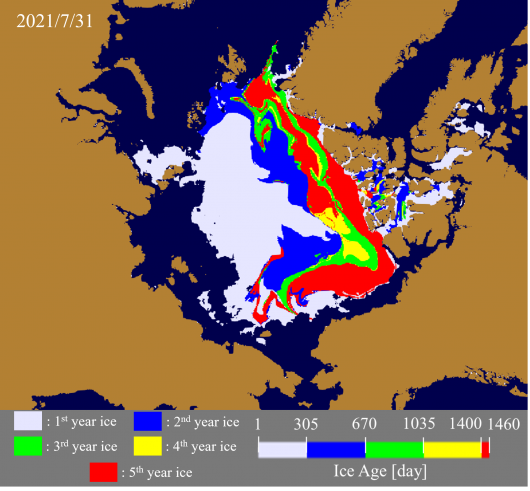2021 Sea Ice Expansion Period Forecast
Arctic Sea Ice Information Center, Noriaki KIMURA (Atmosphere and Ocean Research Institute, The University of Tokyo)

- Sea ice is expected to extend rather slowly over the Chukchi Sea, the East Siberian Sea, and the Atlantic Ocean, while slightly faster over the Canadian Sea excluding the Archipelago Sea.


Blue indicates greater concentration and red indicates less concentration than normal years.
The sea ice extent in the Arctic Ocean has entered a period of expansion. As shown in the predictions of future sea ice extent (Figs. 2 and 3), sea ice extent will increase more slowly than normal years over a wide area along the Russian coast. This is due to the significant retreat of sea ice in the coastal areas, especially in the Laptev Sea. On the other hand, the sea ice extent along the coast of Alaska and Canada will increase slightly faster due to sparse ice remained in the Chukchi Sea and Beaufort Sea.


This year, sparse sea ice remained widely from the Beaufort Sea to the Chukchi Sea (Fig. 4). This is considered because the multi-year ice, whose age is more than 3 years, shown in red and green in Fig. 5, remained unmelted. Our prediction, however, does not consider the age of the sea ice, so the distribution of sea ice around the Chukchi Sea is reproduced inaccurately. And it does not reproduce the sea ice remained in the Kara Sea accumulated by west wind.
The sea ice extent in the Arctic Ocean tends to increase in the opposite pattern to that of the decrease in summer. The faster the sea ice disappears, the slower the sea ice increases in fall. Thus, there is a correlation between the speed of sea ice retreat in summer and the sea ice concentration during the fall expansion (see the 2017 fall forecast). One factor may be that the earlier sea ice disappears the longer the sea surface get warmed, and it slows down the sea ice formation in fall.
Based on this relation, the correlation between the number of days when the sea ice concentration was less than 15% from May 1 to August 31 and the sea ice concentration after October 1 is used to make this forecast. The data for 16 years from 2003 to 2020 (except for 2011 and 2012 when the data were not available) are used for the calculation.
For this prediction, we used the sea ice data from satellite microwave sensors AMSR-E and AMSR2, and the relationship between the winter ice motion and summer ice concentration (Kimura et al., 2013). This forecast considers the long-term trend of sea ice concentration as well as the movement of sea ice during the winter, in the same manner as that of the last year’s work.
Ice prediction map is also available in Arctic Data Archive System (ADS) at National Institute of Polar Research.
If you have any questions about satellite monitoring of the Arctic Ocean, sea ice forecasting, or the forecasting methods used here, please contact the Sea Ice Information Center(sea_ice@nipr.ac.jp)
The sea ice forecast and its basic research were started in GRENE, continued to ArCS Project, and has been conducted in ArCS II Project since 2020.


